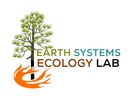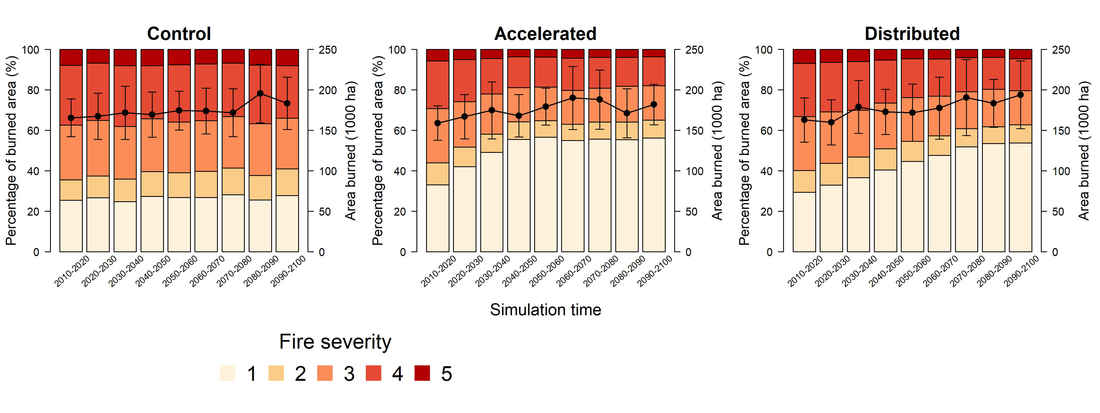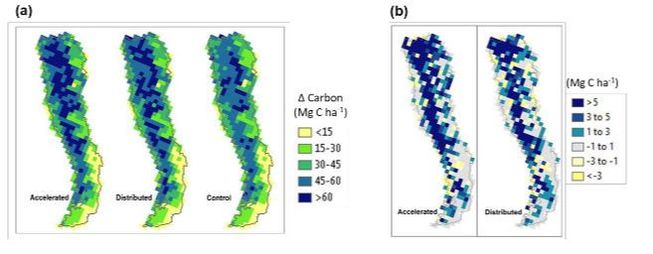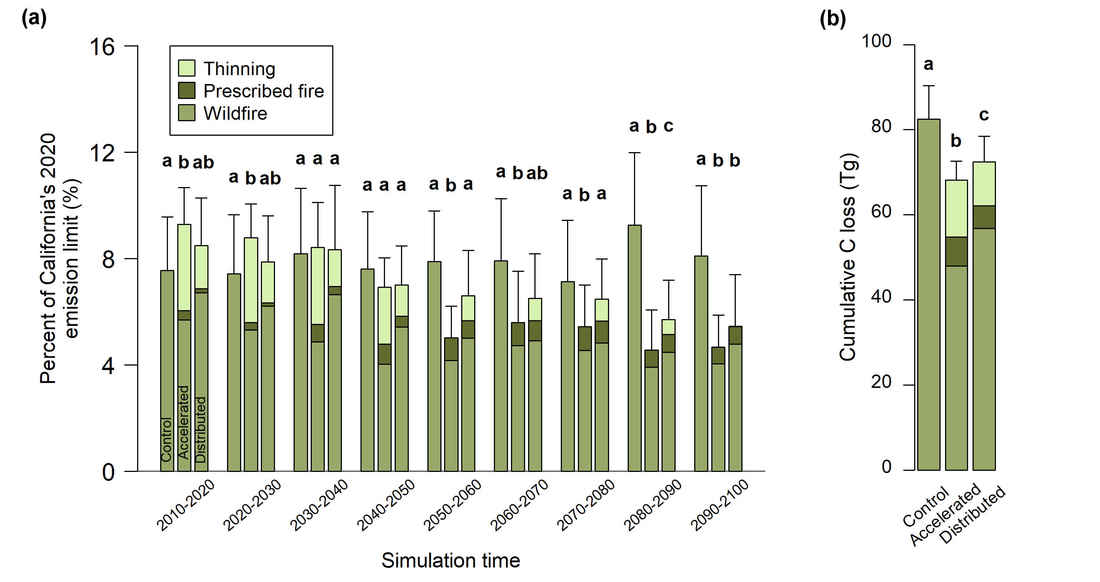|
There seems to be a misunderstanding in what is often referred to loosely as wildfire risk. Risk for anything is calculated by combining the probability or chance that an event occurs and the consequence of that event occurring. We do things to manage risk that can change either the chance that the event occurs, the consequence of the event occurring, or both. The COVID-19 vaccine is a perfect example of changing both, by decreasing the chance that you get COVID-19 and the consequence if you do (decreased severe illness).
In wildfire terms, I keep seeing news stories and quotes from elected leaders that forest management is going to reduce wildfire risk or, in the most poor representation of the concept, treatments will stop wildfires. In terms of the risk equation, the chance that a wildfire occurs is the result of having an ignition source when the vegetation and weather will support that ignition turning into a fire. The consequence of the fire depends on how and where the fire burns. We have no shortage of ignitions on our flammable landscapes in the US. This year, in the western US, we have severe drought conditions that mean there is a greater chance that an ignition will cause vegetation to combust because dry vegetation is more flammable than wet vegetation. What we really care about though is the consequence of a wildfire occurring and this is where forest and vegetation management come into play. As I have written about before (here and here), when you have more vegetation and it becomes drier, fires can become more impactful because they are releasing substantial amounts of energy that can lead to things like a fire creating its own weather. Managing vegetation reduces the chance that a fire creates its own weather because there is less energy stored in vegetation. Managing vegetation also helps create conditions that allow wildland firefighters to more easily protect homes and it changes the effects of the fire on the vegetation that is present on the landscape. The basic fact is that we cannot exclude fire from our landscapes. We have plenty of ignitions and climate change is making the vegetation more flammable. We also have a surplus of vegetation in a number of areas because we have been excluding fire for decades. We are trying to change the risk with forest management by changing the way the fire burns on the landscape. We also need to work on making homes less flammable and managing vegetation in the wildland urban interface to help reduce risk, but that is a topic for another day. When you hear or read about reducing wildfire risk, this is really about changing the way that fire behaves on the landscape. When you hear someone talk about forest management stopping fire, know that is incorrect and we cannot stop fire. Managing vegetation to change fire behavior is one of the solutions that we have at the local level for managing the risk of high-consequence wildfires.
0 Comments
The explosive nature of the vegetation currently burning in the California wildfires is a direct result of high temperature and a prolonged period with no rain. Vegetation, or fuel as it is often referred to in fire science, contains water. Water has a high specific heat, which is the amount of energy required to raise an amount water by one degree Celsius. In the case of water it is 4.186 joules of energy per gram of water. To get vegetation to burn you need enough heat to boil off the water in the vegetation first. It takes 540 kcal to boil a kilogram of water. This is precisely why if you try and start a campfire with wet wood, you are going to be cold.
In the shrub or chaparral ecosystems that are currently burning in southern California, fuel moisture after the winter rainy season is over 100%. That means that for every kilogram of shrub there is a kilogram or more of water. This year, Chamise, a common shrub in southern California, peaked at 120% fuel moisture and is currently at 60% fuel moisture. This means half as much energy is required to get the shrubs to burn now as was required back in early June. When you are trying to light a campfire, the best thing to do is to get your head down near the base and blow. This increases the amount of air and oxygen moving past the flame. A little flicker, some well place blowing, and viola, you’ve got a nice campfire. Now add Santa Ana winds to already dry fuel and an ignition source and the result is explosive fire conditions. As vegetation burns and generates heat, it pre-heats the vegetation in front of it, causing the water to boil off before the flame reaches the vegetation. This preconditions the vegetation to burn, similar to seasoning your fire wood. How climate change makes it worse Climate change is causing higher temperatures, both during the day and at night. When the atmosphere is warmer, it can hold more water. This causes ecosystems to dry out as water in the ecosystem evaporates and plants release more water as they photosynthesize. As a result, higher temperatures alone are enough to dry out vegetation. Next we add the longer dry season in California. The length of time between when the winter rains in one year stop and the rains the next year start has been increasing with ongoing climate change. These two factors, higher temperatures and a longer dry season, increase the length of time each year that these ecosystems are available to burn. The longer it has been since the last rain event, the drier the vegetation. This prolong dry period and drier vegetation during the Santa Ana wind period causes explosive fire growth during high wind events. The area burned by wildfire in the Sierra Nevada has increased by 274% over the last 40 years and the area impacted by stand-replacing fire has also increased. The forests in the Sierra Nevada are important for provision of clean water and are also part of the state’s climate action plan. As a result, figuring out how to reduce the chances of large, hot fires presents a large challenge. We know that the current pace and scale of forest treatments to reduce the risk of large, hot fires is inadequate given the scale of the problem and the area burned by wildfire is projected to increase with on-going climate change. In a recent study led by Shuang Liang, we set out to determine how the pace of large-scale treatment implementation would alter carbon storage across the Sierra Nevada. We ran simulations under projected climate and wildfire and two management scenarios. Both management scenarios included applying thinning and prescribed burning treatments to low and mid-elevation forests. These are forests that have been most impacted by fire suppression. In the distributed scenario, we simulated an equal portion of the area treated at each time-step and with full treatment implementation by the end of this century. In the accelerated scenario, we simulated the same treatments over the same area, but schedule the treatments so they were complete by 2050. We included a control scenario that assumed no active management for comparison. The area burned between all three scenarios was fairly consistent because we used the same fire size distributions in our simulations (black line in Figure 1). However, the proportion of burned area that was burned by stand-replacing fire (severity 4 and 5) decreased substantially. The faster pace of treatment under the accelerated scenario increased the proportion of area burned by surface fire (severity 1 and 2) and decreased the area burned by stand-replacing fire at a much faster rate than the distributed scenario. Both the accelerated and distributed treatments ended up storing more carbon than the control by 2100 (Shown by the difference in Figure 2). However, what was most striking was how these treatments influence the carbon balance of Sierra Nevada forests as a percentage of California’s 2020 emissions limit from the Governor’s Climate Action Plan. Initially, total carbon losses are higher in the treatment scenarios, with the accelerated treatment having the largest loss (Figure 3). However by 2030, carbon loss is similar amongst all three scenarios and by 2050 the accelerated scenario has lower emissions than the wildfire emissions under the control. As we demonstrated in a previous study, changing climate and the increase in area burned has the potential to increase wildfire emissions by 19-101% by later this century. The results from this study demonstrate that restoring surface fires to the low and mid-elevation forests in the Sierra Nevada can reduce the magnitude of future emissions and maintain a larger amount of carbon stored in these forests.
|
Details
Archives
October 2023
Categories
All
|




 RSS Feed
RSS Feed